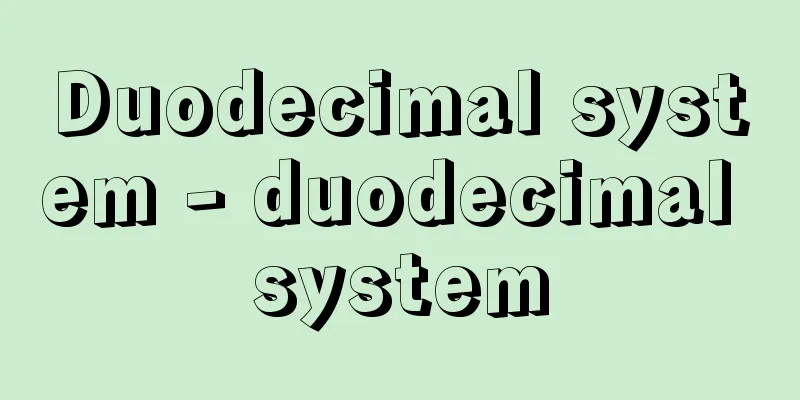Electricity

|
These maps were created when the land distribution system was implemented in the Ritsuryo state. There are two types of maps: the Kōdenzu, which show the results of a survey of land ownership when land distribution was carried out, and the Hōdenzu, which show the results of land distribution based on the results of the Kōden. The Randzu not only recorded the results of the Kōden, but also registered the existence of abandoned fields, the state of reclamation, and even the existence and classification of fields for temples and shrines, and served as one of the basic ledgers for public taxes and dues. When a Randzu was created, one was sent to the central government and kept in the Ministry of Civil Affairs (Ministry Map), and the other was kept in the Kokugun (Kokugun Map). In addition to the Randzu, a Randoshi was also created when Kōden was carried out. The Randoshi is a land register that lists the names and towns, danbu, and land ownership of the recipient households, and clearly indicates the land ownership. On December 26, 820 (Kōnin 11), an official order was issued stating, "To keep the rice fields in Masa and to remove the rice fields," and while the production of rice fields continued, the production of rice fields was to be stopped and removed. However, not all the rice fields were removed, as "the fourteenth year of Tenpyō, the seventh year of Shohō, the fourth year of Hōki, and the fifth year of Enryaku were all verified," and so the four years from 742 (Tenpyō 14) onwards, together with the rice fields, were kept as "verification years" (four verified maps). In the 10th century, it became difficult to implement land allocation, and the creation of school land allocations ceased, but the land map system itself was further strengthened. The aim of this strengthened land map system was to fix the area of non-exempt land to already registered fields, and even in the case of a manor that had been exempted by the Daijokan and the Ministry of Civil Affairs, the lord of the manor had to apply for exemption of the manor to the kokushi in whose territory the manor was located, listing the land area and land area, and the kokushi who received the application had to investigate the application and decide whether to exempt it (the exemption land system). The basis of this exemption land system was the land map, and there is a theory that the land map used for this was newly created in the early 10th century (the standard land map), and another theory that it was the last land map. It was the kokushi who actually decided the exemption land, and they showed a tendency to arbitrarily expand the area of non-exempt land that was fixed in the land map. [Okuno Nakahiko] "The Japanese Dynastic State System" by Sakamoto Shozo (1972, University of Tokyo Press)" ▽ "The Manor Research Group, ed., "Basic Research on Manor Maps" (1973, Sanichi Shobo)" ▽ "Research on Manor Maps" by Takeuchi Rizo (1982, Tokyodo Publishing)" Source: Shogakukan Encyclopedia Nipponica About Encyclopedia Nipponica Information | Legend |
|
律令(りつりょう)国家において班田制施行に伴って作成された地図。班田収授を行うに際して土地所有状況を調査した結果を示した校田図と、校田の結果に基づき班田収授の結果を示した班田図とがある。田図は校班田の結果を記しただけではなく、荒廃田の存在や開墾の状況、さらには寺社田の別とその存在についてもいちいちこれを登記し、公租公課の基礎台帳の一つとされていた。田図は作成されると、その一つは中央に送進、民部省に保管され(省図)、一つは国郡にとどめられた(国郡図)。校班田の際、作成されるものに田図のほかに田籍がある。田籍とは受給戸主の姓名と町段歩を列記し、田主権を明示した土地台帳である。820年(弘仁11)12月26日に、「応(マサ)ニ田図ヲ留(トド)メ田籍ヲ除クコト」という官符が出て、田図のほうは以後も作成を続けるが、田籍のほうは作成を止め、これを除くということになった。もっとも、田籍はみな除いたわけではなく、「天平(てんぴょう)十四年、勝宝(しょうほう)七歳、宝亀(ほうき)四年、延暦(えんりゃく)五年四度、図籍皆証験トナス」ということで、742年(天平14)以下、計四度の田籍は田図ともども「証年」ということでとどめられた(四証図(ししょうず))。 10世紀に入ると、班田実施が困難となり、したがって校班田も作成されなくなるが、田図制度そのものはいっそう強化された。この強化された田図制度のねらいは、不輸の範囲をすでに登記してある田地に固定しようとするものであり、たとえ太政官(だいじょうかん)と民部省の免判を受けた官省符荘(しょう)にあっても、その荘園領主は、その荘園所在の国司に対し、荘田の坪付と面積とを列挙して、その荘田の免除を申請し、これを受けた国司はそれを調査したうえで免除の判断する手続(免除領田制)を必要とした。この免除領田制の基となったのが田図で、これに用いられた田図は、10世紀初期に新しく作成された(基準国図)という説と、最後の班田図がそれであるという説がある。免除領田の認定の実際にあたったのは国司で、彼らは、田図に固定された不輸田の範囲を恣意(しい)的に拡大する動きを示した。 [奥野中彦] 『坂本賞三著『日本王朝国家体制論』(1972・東京大学出版会)』▽『荘園研究会編『荘園絵図の基礎的研究』(1973・三一書房)』▽『竹内理三編『荘園絵図研究』(1982・東京堂出版)』 出典 小学館 日本大百科全書(ニッポニカ)日本大百科全書(ニッポニカ)について 情報 | 凡例 |
>>: Tenth (English spelling) Iniistius dea
Recommend
Katun [river] - Katun
The Ob River is a large river in Western Siberia,...
Lighthouse
(lighthouse) A lighthouse. (Dictionary of Foreign ...
Alsace-Lorraine
A region on the west bank of the Rhine River in n...
Skill-based pay
Wages are determined based on the worker's jo...
Lister, DS (English spelling) ListerDS
...A sport in which opponents wearing gloves on b...
Scabbard - sheath
〘Noun〙① A tube for storing the blade of a sword. D...
《The Hygiene of the Working Class in England》 - The Hygiene of the Working Class in England
…In England, where the housing problem first emer...
San Cristóbal (English spelling)
The capital of Tachira State in western Venezuela....
Sea urchin - Sea urchin
…The word “tataki” comes from the fact that both ...
Bukharin (English notation) Nikolay Ivanovich Buharin
Russian revolutionary and Soviet politician. Born...
Sekichukei
The valley of the Doudou River, a small tributary ...
facular plage (English spelling) facular plage
...Also called floccules or chromospheric white s...
Viola brevistipulata (English name) Viola brevistipulata
… [Yukio Taniguchi]. … *Some of the terminology t...
leadpipe phenomenon
…When the muscles of the limbs are in a state of ...
High-speed car
A Turkic northern nomadic tribe that appeared in ...









